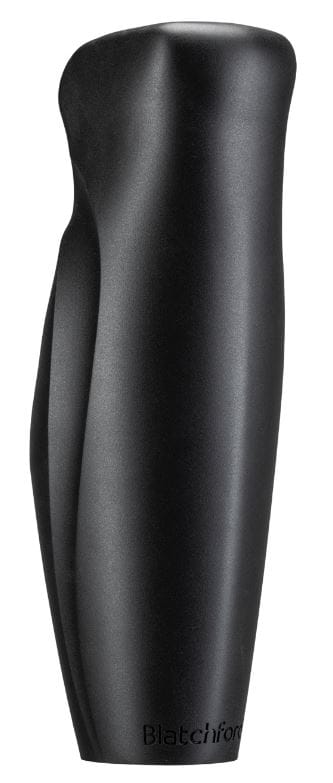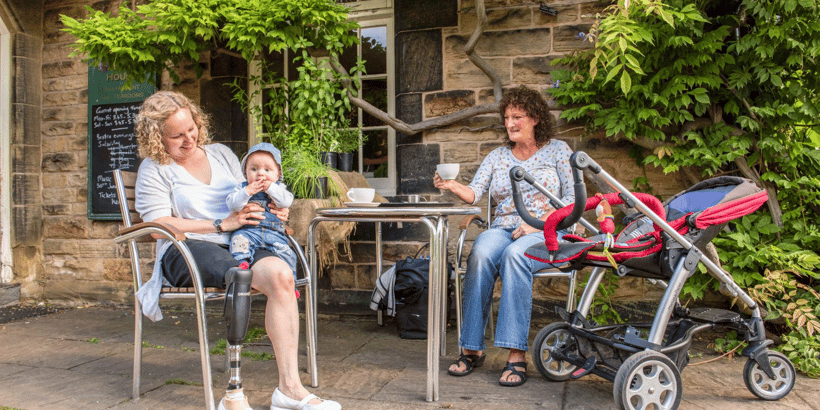Caring for Your Lower Limb Prosthetic
Common sense and good practice are the keys to avoiding many problems with your residual and artificial limb. It is worthwhile having your artificial limb checked on a yearly basis even if you are experiencing no particular problems. Follow the advice in these pages and always feel free to discuss any concerns you may have at your next appointment.
The artificial limb (prosthesis) that you have been provided, has been manufactured and assembled to a high specification and often contains sophisticated devices.
The components, along with the prosthetic socket, form the structure of the artificial limb and hopefully give you a device that is both comfortable and reliable for your daily living needs. However, please be aware of the following “Do’s and Don’ts” in looking after your artificial limb.
These will help you keep the limb in good condition and prevent any serious fitting or mechanical problems.
The Socket & the Liner
This is the part of the artificial limb that fits onto your residual limb. The following notes are important to maintain a good fit and prevent problems with your skin and the underlying tissues.
- Do take adequate time each day to clean and inspect the socket and liner. Poor hygiene within the socket and liner are one of the major causes of skin problems and residual limb infections. Your prosthetist will tell you how to clean the liner and socket and they may also be able to give you the manufacturer’s literature regarding specific liner care and hygiene.
- Do be careful if adding or removing socks from your residual limb to improve the socket fit. If you are adjusting the fit with more than three socks you probably need to contact the clinic for a review appointment.
- Do not adjust the socket yourself by cutting, trimming or putting pads in any part of it as this can lead to serious residual limb problems and safety issues with your artificial limb.
- If you get a sore that needs a dressing, please telephone the nurse at the clinic for advice.
- Do not immerse the socket or liner in water and, although we recommend that you don’t get the limb wet, it is advisable to clean the liner using a damp cloth and a little soapy water.

Knee Joints & Feet
If you have had an above knee (trans-femoral) amputation, your limb will usually have a socket, some kind of prosthetic knee joint and a prosthetic foot. People with below knee (trans-tibial) amputations will usually have only a socket and a prosthetic foot.
Being aware of what is good practice and looking after your artificial limb is an important part of your limb wearing and is recommended for your own personal safety.
- Do not oil, grease, lubricate or use any other chemicals on the knee or foot. If they are noisy, damaged or broken, contact the clinic to make a repair appointment.
- Do not adjust knees or feet unless your prosthetist has shown you how to do this.
- When you buy new shoes make sure that the heel height is the same as the one your artificial limb was made to. Different heel heights can cause socket and walking problems. Contact the clinic for an appointment if you need further advice. There is a link called “Wearing different shoes/heel heights” which explains this further. Please ask your prosthetist.
- If you need to kneel, try to avoid dropping heavily onto the prosthetic knee. Instead, lower yourself gradually into the kneeling position so you can avoid high impact on the prosthetic knee. It is best to use a kneeling pad or a cushion.
- Do not immerse prosthetic knee joints or prosthetic feet in water and avoid getting the artificial limb wet (unless it is waterproof).

Suspension
The way your limb is held on is usually referred to as the suspension. Often this can be some sort of belt or strap around the knee or waist. Liners that are rolled on the residual limb are held by locating a pin into a lock within the socket are another form of suspension.
- Do not cut or adjust belts and straps yourself.
- Be very careful when using liners with pins. Always ensure the residual limb sock you use over the liner is well away from the end of the pin as threads from the sock entering the lock may cause it to jam.
- Only ever wash or clean belts, straps and liners according to manufacturers’ instructions or on the advice of your prosthetist.
Cosmetic Cover (Cosmesis)
This is the foam outer part of your artificial limb that covers the structure and the internal components and is usually made from soft foam.
- Do not remove the cosmesis to see what is underneath once the artificial limb is delivered to you. The cosmetic cover will have been fixed in a special way and removing it may interfere with the internal structure and may make the limb unsafe. Contact the clinic to make a repair appointment if you need any alterations or repairs to your cosmetic cover.
- Often limbs are covered with a loose stocking or plastic cover over the cosmetic foam, which will need replacing periodically. You can replace the stocking cover quite easily. Contact the clinic and explain what you want. The appropriate stocking can be posted to you. If you have a plastic cover you will need to make an appointment to have it replaced. You can use a damp cloth and a nonabrasive cleaner such as washing up liquid to clean the plastic cover.
- Do not immerse the limb and cosmetic cover in water and avoid getting the artificial limb wet (unless it is waterproof).

Introducing the Blatchford Cosmetic Cover
Cosmetic Cover
The Cosmetic Cover provides optimal protection against wear and tear from everyday activities for Orion3 and Linx prosthesis.
Whether it’s scratches, impact or wear and tear, the Cosmetic Cover protects the prosthesis whilst being lightweight in design.
The Cosmetic Cover makes kneeling more comfortable by softening contact with the ground. The design also enhances a more natural shape under clothes.
The cover simply clips together so is easy to put on and take off. The design also allows for easy access to charging points and controls.
The Blatchford Community
For over 130 years Blatchford has designed and produced some of the world's most advanced artificial limbs and mobility solutions. Learn more about resources available to help you and/or the amputee in your life!
